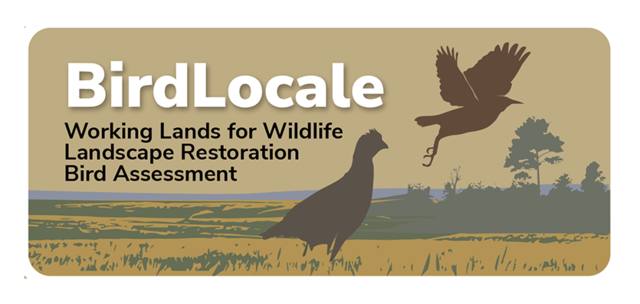-
 Summary of Kentucky Wildlife Action Plan.pdf
Summary of Kentucky Wildlife Action Plan.pdf
-
Located in
Archived Groups
/
…
/
SC Programmatic Alignment Work Group
/
State Wildlife Action Plans (SWAPs)
-
 Summary of North Carolina Wildlife Action Plan
Summary of North Carolina Wildlife Action Plan
-
Overview of NC SWAP.
Located in
Archived Groups
/
…
/
SC Programmatic Alignment Work Group
/
State Wildlife Action Plans (SWAPs)
-
 Full Proposal: Interactive Conservation Planning
Full Proposal: Interactive Conservation Planning
-
Using available data and modeling approaches that are well represented in the literature, researchers will develop conservation planning models that include site selection, threats, and connectivity analyses. These draft results will be presented to Steering Committee and then informed and refined by their feedback and other stakeholders. After each round of feedback, a revised conservation scenario will be produced. Draft conservation scenarios and associated products produced by each of these feedback rounds will be supplied to stakeholders with supporting documentation. Following 2-3 such feedback loops, conservation planning map products will be posted on the Portal.
Located in
Interactive Conservation Planning TOT
/
Background Project and Member Information
-
Conservation Action Map
-
The Tennessee River Basin Network is comprised of a vast cast of characters working to conserve natural resources through science, management action, communications and engagement. This map highlights specific conservation actions from members of the Network. It is a visual tool to identify who is doing what where, with the goal of helping to share resources and information and bolster collaborative action to make conservation more efficient and effective.
Located in
Projects
-
Assessing Future Energy Development across the Appalachians
-
The Nature Conservancy - with support from the Appalachian LCC - has completed a study to assist policy makers, land management agencies, and industry in assessing potential future energy development and how that may overlap with biological and ecological values.
Located in
Tools
-
Products and Tools
-
Models of wind, shale gas, and coal development for the entire study area have been created to predict potential future energy development and impacts to natural resources within the Appalachians. Models and data from all development projections populate a web-based mapping tool to help inform regional landscape planning decisions.
Located in
Tools
/
Assessing Future Energy Development
-
Foundational Research
-
The research and online mapping tool funded by the Appalachian LCC is part of The Nature Conservancy’s Development by Design approach. This approach brings sound science to reflect the big picture of current and future impacts of energy development on nature and natural resources across the Appalachians.
Located in
Tools
/
Assessing Future Energy Development
-
Awareness and Outreach
-
The information and tools from this research is intended to inform planning decisions that can effectively avoid, minimize, or offset impacts from energy development to important natural areas.
Located in
Tools
/
Assessing Future Energy Development
-
Data Access
-
Assessing Future Energy Development study assembled and combined data on various energy development trends such as coal, wind, and shale gas to help in identifying where these may intersect with important natural resource and ecosystem services to give a more comprehensive picture of what potential energy development could look like in the Appalachians.
Located in
Tools
/
Assessing Future Energy Development
-
Energy Forecast Mapping Tool Tutorial
-
This video presentation by Judy Dunscomb, Senior Conservation Scientist at The Nature Conservancy, provides a detailed overview of how to use the Energy Forecast Mapping Tool.
Located in
Tools
/
Assessing Future Energy Development


